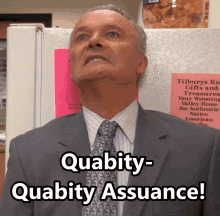deleted by creator
Using AI for anomaly detection is nothing new though. Haven’t read any article about this specific ‘discovery’ but usually this uses a completely different technique than the AI that comes to mind when people think of AI these days.
It’s really difficult to clean those data. Another case was, when they kept the markings on the training data and the result was, those who had cancer, had a doctors signature on it, so the AI could always tell the cancer from the not cancer images, going by the lack of signature. However, these people also get smarter in picking their training data, so it’s not impossible to work properly at some point.
Now make mammograms not $500 and not have a 6 month waiting time and make them available for women under 40. Then this’ll be a useful breakthrough
It’s already this way in most of the world.
Oh for sure. I only meant in the US where MIT is located. But it’s already a useful breakthrough for everyone in civilized countries
I think it’s free in most of Europe, or relatively cheap
Done.
Unfortunately AI models like this one often never make it to the clinic. The model could be impressive enough to identify 100% of cases that will develop breast cancer. However if it has a false positive rate of say 5% it’s use may actually create more harm than it intends to prevent.
That’s why these systems should never be used as the sole decision makers, but instead work as a tool to help the professionals make better decisions.
Keep the human in the loop!
How would a false positive create more harm? Isn’t it better to cast a wide net and detect more possible cases? Then false negatives are the ones that worry me the most.
It’s a common problem in diagnostics and it’s why mammograms aren’t recommended to women under 40.
Let’s say you have 10,000 patients. 10 have cancer or a precancerous lesion. Your test may be able to identify all 10 of those patients. However, if it has a false positive rate of 5% that’s around 500 patients who will now get biopsies and potentially surgery that they don’t actually need. Those follow up procedures carry their own risks and harms for those 500 patients. In total, that harm may outweigh the benefit of an earlier diagnosis in those 10 patients who have cancer.
Breast imaging already relys on a high false positive rate. False positives are way better than false negatives in this case.
That’s just not generally true. Mammograms are usually only recommended to women over 40. That’s because the rates of breast cancer in women under 40 are low enough that testing them would cause more harm than good thanks in part to the problem of false positives.
Nearly 4 out of 5 that progress to biopsy are benign. Nearly 4 times that are called for additional evaluation. The false positives are quite high compared to other imaging. It is designed that way, to decrease the chances of a false negative.
The false negative rate is also quite high. It will miss about 1 in 5 women with cancer. The reality is mammography is just not all that powerful as a screening tool. That’s why the criteria for who gets screened and how often has been tailored to try and ensure the benefits outweigh the risks. Although it is an ongoing debate in the medical community to determine just exactly what those criteria should be.
deleted by creator
The most beneficial application of AI like this is to reverse-engineer the neural network to figure out how the AI works. In this way we may discover a new technique or procedure, or we might find out the AI’s methods are bullshit. Under no circumstance should we accept a “black box” explanation.
iirc it recently turned out that the whole black box thing was actually a bullshit excuse to evade liability, at least for certain kinds of model.
Link?
This ones from 2019 Link
I was a bit off the mark, its not that the models they use aren’t black boxes its just that they could have made them interpretable from the beginning and chose not to, likely due to liability.
If it has just as low of a false negative rate as human-read mammograms, I see no issue. Feed it through the AI first before having a human check the positive results only. Save doctors’ time when the scan is so clean that even the AI doesn’t see anything fishy.
Alternatively, if it has a lower false positive rate, have doctors check the negative results only. If the AI sees something then it’s DEFINITELY worth a biopsy. Then have a human doctor check the negative readings just to make sure they don’t let anything that’s worth looking into go unnoticed.
Either way, as long as it isn’t worse than humans in both kinds of failures, it’s useful at saving medical resources.
This is exactly what is being done. My eldest child is in a Ph. D. program for human - robot interaction and medical intervention, and has worked on image analysis systems in this field. They’re intended use is exactly that - a “first look” and “second look”. A first look to help catch the small, easily overlooked pre-tumors, and tentatively mark clear ones. A second look to be a safety net for tired, overworked, or outdated eyes.
You in QA?

HAHAHAHA thank fuck I am not
Nice comment. I like the detail.
For me, the main takeaway doesn’t have anything to do with the details though, it’s about the true usefulness of AI. The details of the implementation aren’t important, the general use case is the main point.
And if we weren’t a big, broken mess of late stage capitalist hellscape, you or someone you know could have actually benefited from this.
I’m involved in multiple projects where stuff like this will be used in very accessible manners, hopefully in 2-3 years, so don’t get too pessimistic.
This is similar to wat I did for my masters, except it was lung cancer.
Stuff like this is actually relatively easy to do, but the regulations you need to conform to and the testing you have to do first are extremely stringent. We had something that worked for like 95% of cases within a couple months, but it wasn’t until almost 2 years later they got to do their first actual trial.
I can do that too, but my rate of success is very low
Can’t pigeons do the same thing?
AI should be used for this, yes, however advertisement is more profitable.
Not my proudest fap…
Btw, my dentist used AI to identify potential problems in a radiograph. The result was pretty impressive. Have to get a filling tho.
I had a housemate a couple of years ago who had a side job where she’d look through a load of these and confirm which were accurate. She didn’t say it was AI though.
For a little while ours was used for this. Covid too. Client was under an alias and wasn’t with us long so no idea.
Ductal carcinoma in situ (DCIS) is a type of preinvasive tumor that sometimes progresses to a highly deadly form of breast cancer. It accounts for about 25 percent of all breast cancer diagnoses.
Because it is difficult for clinicians to determine the type and stage of DCIS, patients with DCIS are often overtreated. To address this, an interdisciplinary team of researchers from MIT and ETH Zurich developed an AI model that can identify the different stages of DCIS from a cheap and easy-to-obtain breast tissue image. Their model shows that both the state and arrangement of cells in a tissue sample are important for determining the stage of DCIS.
https://news.mit.edu/2024/ai-model-identifies-certain-breast-tumor-stages-0722
How soon could this diagnostic tool be rolled out? It sounds very promising given the seriousness of the DCIS!
As soon as your hospital system is willing to pay big money for it.











